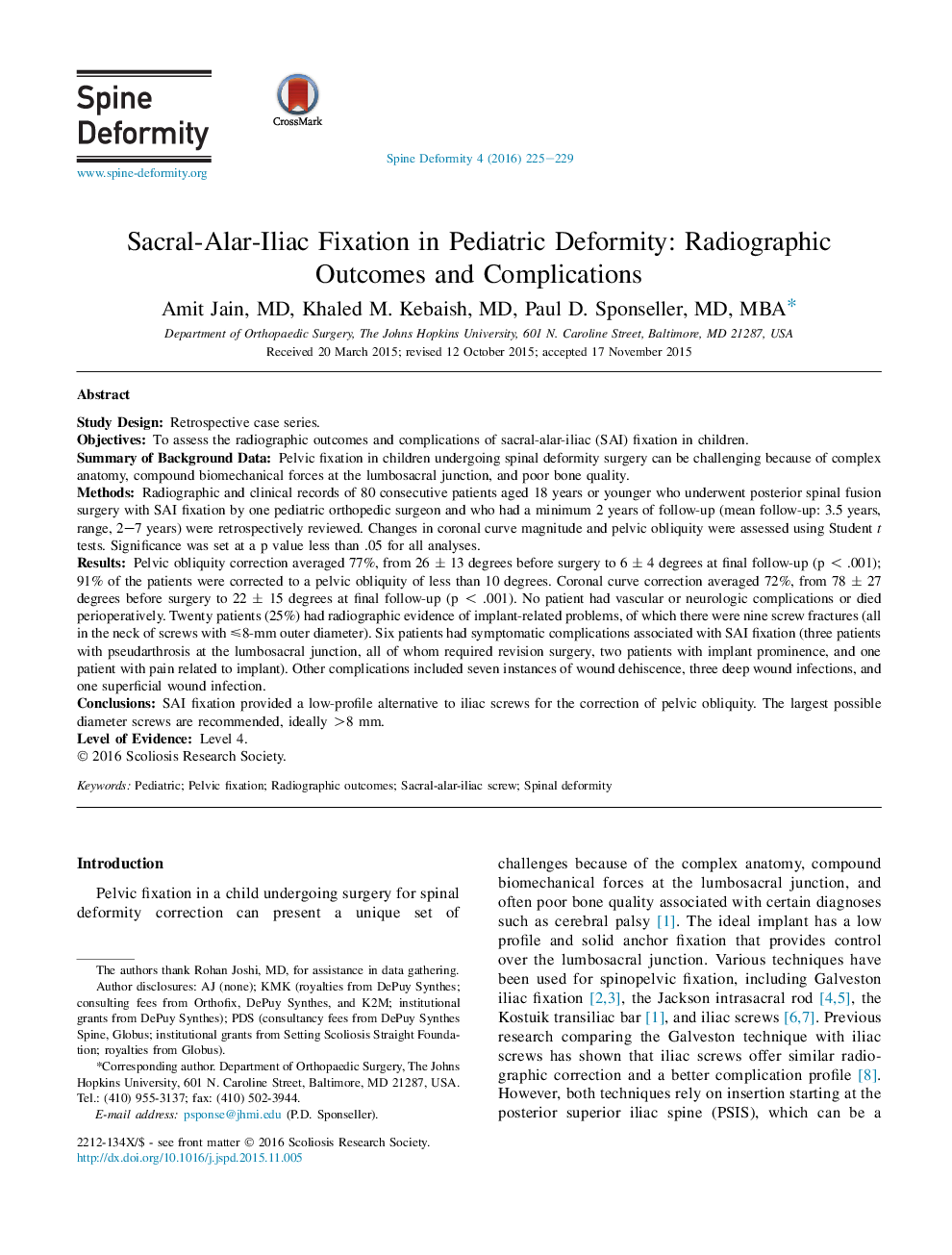| Article ID | Journal | Published Year | Pages | File Type |
|---|---|---|---|---|
| 4095387 | Spine Deformity | 2016 | 5 Pages |
Study DesignRetrospective case series.ObjectivesTo assess the radiographic outcomes and complications of sacral-alar-iliac (SAI) fixation in children.Summary of Background DataPelvic fixation in children undergoing spinal deformity surgery can be challenging because of complex anatomy, compound biomechanical forces at the lumbosacral junction, and poor bone quality.MethodsRadiographic and clinical records of 80 consecutive patients aged 18 years or younger who underwent posterior spinal fusion surgery with SAI fixation by one pediatric orthopedic surgeon and who had a minimum 2 years of follow-up (mean follow-up: 3.5 years, range, 2–7 years) were retrospectively reviewed. Changes in coronal curve magnitude and pelvic obliquity were assessed using Student t tests. Significance was set at a p value less than .05 for all analyses.ResultsPelvic obliquity correction averaged 77%, from 26 ± 13 degrees before surgery to 6 ± 4 degrees at final follow-up (p < .001); 91% of the patients were corrected to a pelvic obliquity of less than 10 degrees. Coronal curve correction averaged 72%, from 78 ± 27 degrees before surgery to 22 ± 15 degrees at final follow-up (p < .001). No patient had vascular or neurologic complications or died perioperatively. Twenty patients (25%) had radiographic evidence of implant-related problems, of which there were nine screw fractures (all in the neck of screws with ≤8-mm outer diameter). Six patients had symptomatic complications associated with SAI fixation (three patients with pseudarthrosis at the lumbosacral junction, all of whom required revision surgery, two patients with implant prominence, and one patient with pain related to implant). Other complications included seven instances of wound dehiscence, three deep wound infections, and one superficial wound infection.ConclusionsSAI fixation provided a low-profile alternative to iliac screws for the correction of pelvic obliquity. The largest possible diameter screws are recommended, ideally >8 mm.Level of EvidenceLevel 4.
